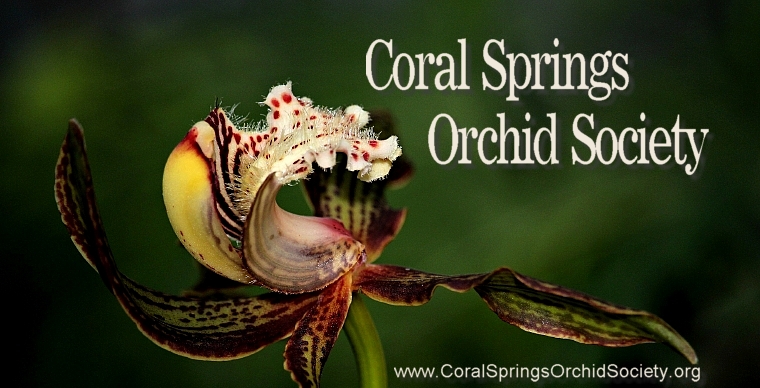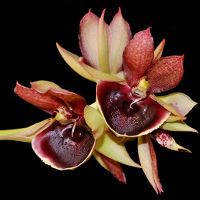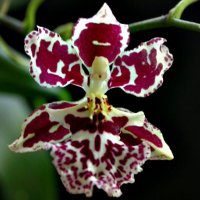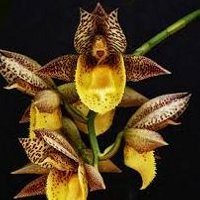



...

© Copyright 2013 - 2018 Coral Springs Orchid Society. All rights reserved.




Light:
Should be strong, especially near the end of the growing period. Early in the annual growth cycle, plants will tolerate less light, from 1,500 to 3,000 foot-candles. Plants grow best with light levels of 3,000 to 6,000 foot-candles, or one-half to three-fourths full sun. As pseudobulbs mature, harden them by giving them slightly more light.
Temperature:
These orchids are native to hot tropical areas and grow during the rainy summer months. During this growing period, day temperatures of 80 to 100° F and night temperatures of 60 to 65° F are beneficial. After growths mature, temperatures can be reduced to 55° F at night, with day temperatures of 70 to 85° F.
Water:
A critical factor for the production of large pseudobulbs that result the best flowering. A great quantity of water must be stored by the plant in a relatively short growing season. Water heavily as new leaves are forming.
As the pseudobulbs mature, gradually reduce watering frequency. Leaves will yellow and drop. At this time, watering should be stopped completely until new growth begins. Water during this dormant period only if the pseudobulbs shrivel severely.
Humidity:
Should be 40 to 60 percent. This can be provided in the home by placing the plants on trays of gravel, only partially filled with water. Plants should not sit in the water. Air should always be moving around them to prevent fungal or bacterial disease, especially if high humidity or cool temperatures exist.
In the greenhouse, humidity is best increased by the use of a humidifier. Evaporative cooling increases humidity while cooling the air.
Fertilizer:
Fertilize and water regularly to produce strong pseudobulbs. Use a high-nitrogen formula (e.g. 30-10-10) while plants are in active growth, slowly tapering off as pseudobulbs form. A blossom-booster formula (e.g 10-30-20) should be used in autumn, except for plants that normally bloom in the spring. Frequent applications of a diluted fertilizer concentration are more effective than occasional applications of a strong one.
Potting:
Should be timed to coincide with the initiation of new growth, usually in the spring. New roots will be produced quickly at that time, and plants will experience minimal setback. Catasetums have vigorous root systems and require a rich, moist potting medium during the growing season. Many growers bare-root their plants during the resting period to ensure dryness at that time.
Fine-grade media are common for smaller pots. Medium-grade media are used only in larger pots. Sphagnum moss is used successfully for plants in many areas, as it provides tremendous water- and fertilizer-holding capacities.
Some plants can be grown on slabs of tree fern or other material, which makes it easier to keep them dry during dormancy. However, it is harder to keep them moist while growing. When well grown, these orchids can be divided down to one mature pseudobulb and will then flower on the next mature growth.
Pests:
Spider mites are a common pest of these orchids when in leaf. Control them by keeping humidity high or spraying with recommended miticides.